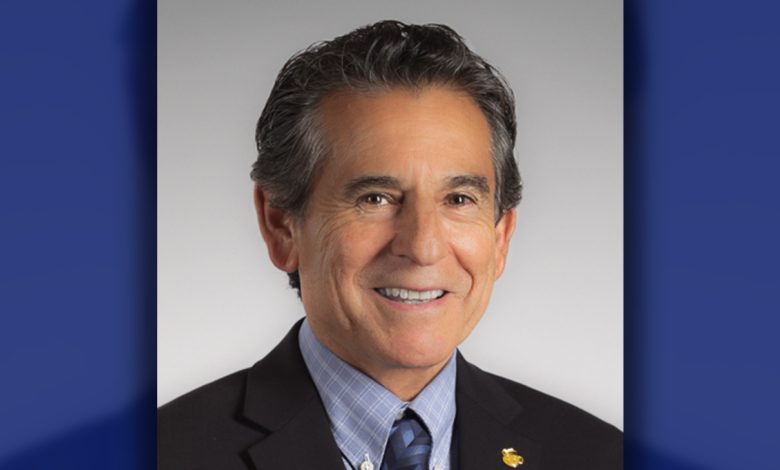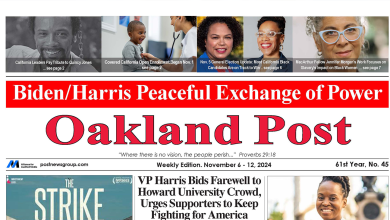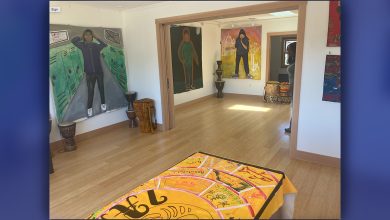
By Magaly Muñoz
Oakland residents will soon vote for new school board directors in four separate districts across the city.
The Post reached out to the eight candidates across Districts 1, 3, 5, and 7 to see what their views are on various topics concerning the OUSD community. Below are questions and answers from District 1 candidates Rachel Latta and Ben Salop.
Responses have been edited for length and clarity.
Q1: What do you think the biggest challenge will be to address while on the board?
Salop: The biggest challenge that we have to address as a board, and as a district, is the lack of trust that our parents and our community members have in the district.
In a lot of issues, we’ve seen that parents who are more interested are more likely to work with their students and their educators for early reading partners, which has measurable successes in increasing grade-level reading rates. So if we can get serious on [community engagement], then it’ll be a lot easier to target the budget. As well as, student success, scores, student achievement, college and career readiness, equity, inclusion, all the other issues that require community trust.
Latta: Change is hard, but fundamental change in how our district is structured is needed. I am committed to working to address systemic inequities in our schools by creating a more equitable, student centered district.
I will create space for community engagement outside of board meetings by taking the discussions out to the community, with regular office hours, school site listening sessions and direct outreach to families.
Q2: Given the large financial debt OUSD has and the looming threat of school closures, how will you ensure that funding for essential resources remain for students? What ideas do you have that do not include closing down schools?
Salop: The first thing we have to do is to listen to our students on what’s most important. We can’t have a concrete strategy to balance the budget or identify priorities by just saying we’re going to have an open conversation.
OUSD project management skills are awful. We have probably lost a ton of money in the 10s of millions of dollars in the last decade, just from poor management skills and poor administration. That is a rough guess by my own back of the envelope calculations. If we don’t figure out how we’re going to do that by auditing our dollars and appointing qualified independent project managers, we won’t be able to use our money any more effectively. And resolving that issue is one of the ways to reduce our deficit.
Latta: We need to do everything we can to protect positions that most directly impact students at our school sites. I would like to direct OUSD to thoroughly examine the scope of work for all central positions in order to understand what is duplicative and whose work is not reaching our sites as successfully as we intend. This includes talking with sites to understand the effectiveness of how these positions directly contribute to the day to day operations of our school sites and authentically contribute to student success and well-being.
As a board member, I will create space for community engagement outside of board meetings by taking the discussions out to the community, with regular office hours, school site listening sessions and direct outreach to families.
Q3: Students have reported feeling as though there is not enough inclusivity amongst their peers, often feeling a divide with those of other race and ethnic backgrounds. What do you think is the best way to foster an environment where students are not feeling excluded because of their differences to peers?
Salop: The first thing to do is to look at our curriculum and see how our school sites and what we’re teaching our students is helping to perpetuate this issue.
What I like to do, and what I will continue to do, is to communicate with students and parents and talk to them and let their approaches and ideas drive the policy making of the district. [I’ve participated] in an OUSD-wide advisory body with students from every single school, and that was a way for us to have these conversations and think about the ways in which schools and students were divided, and how that created a culture of intolerance. And I think supporting that measure and expanding it across our schools is really important just getting our students to work more closely.
Latta: We need to prioritize explicit site-based professional development opportunities for teachers and all staff. We also need to create concrete opportunities for students to learn from each other and about each other in the school day, including building the social-emotional tools needed for students to understand what inclusively really looks like in peer relationships.
Finally, schools should focus efforts on finding ways for students to connect through common interests, such as sports or the arts, and use them as a tool for connection for students from different backgrounds.





